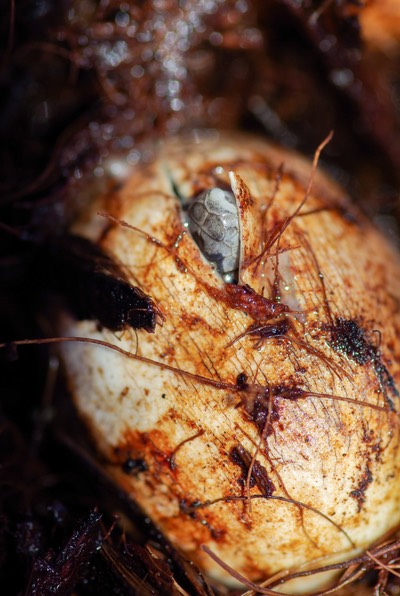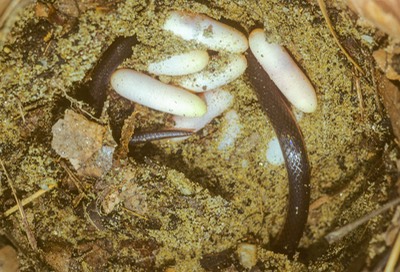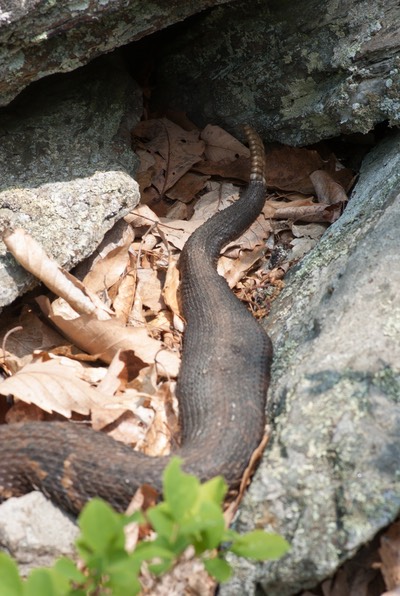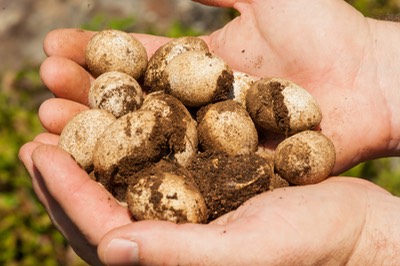
Smooth Greensnake with hatchlings. Note color differences
In the simplest terms, snakes either deposit eggs (oviparous) or give birth to free-living young (viviparous).
Most that are oviparous have already mated the previous year (thus storing sperm overwinter) or mate in the current spring and then put their eggs in places we know very little about. I have found snake eggs, by chance, under logs or rocks, but most of the time females must put them underground, beneath leaf litter, inside natural cavities, within rotting logs, or somewhere else. Once, I was rifling through the debris at the base of a Pileated woodpecker feeding tree looking for insect remains. Much to my surprise there were eight or ten Milksnake eggs; no wonder many people find Milksnakes (adults, hatchlings,and eggs) in compost and especially woodchip piles.
Half of our Western Mass snakes lay eggs, and there’s plenty of variation. For example, egg size, number, and shape are quite different between species. Ratsnakes produce marshmallow-shaped eggs, Ringneck eggs look like little crescent moons and Wormsnake eggs sure look like Good-and-Plenty candies! Some species produce only six to eight eggs (Ring-necked) while Ratsnakes can have as many as 27.
Most oviparous snakes place their eggs in some location (none of our snakes make any kind of nest) from late May to mid June and these hatch from late August to mid September without any parental care, as far as we know. However, Greensnake females retain their eggs until early September and the young hatch within a week or two.
Viviparous females grow embryos in their reproductive tract (the ovaries) through spring and summer. It appears that Gartersnakes, at least, have a placenta-like structure where the developing young actually get some nourishment and other benefits from their mother (a trait once thought to be unique to mammals).
Female livebearers typically move less, bask more, and feed less than non-gravid females or adult males. Seems reasonable—by moving in and out of shelter, heat sources (sunlight, warm rocks), and having access to water (via rainfall or a nearby spring, stream or river) females spend most of their active season baking embryos. Many females don’t feed, yet their bodies swell throughout the active season. By the time they are ready to give birth they are noticeably thicker.
One fascinating variation on the livebearer theme is the Timber Rattlesnake. Recent field studies show that females mate in a particular year (usually in mid summer). They continue feeding and moving then enter their winter dens by mid to late autumn. When they emerge the following spring they navigate to historic locations now called Birthing Rookeries where one or more females spend the entire summer together; in other locations where populations haven’t been so depleted, up to a few dozen females are at these rookeries.
Here they bask in strong sunlight, take shelter under large rocks or fissures, drink water that forms in puddles (or even drink it from their own coils) and apparently do not eat for the entire year. They can give birth at the rookery, but several females tracked in recent years here in Western MA migrate back to the winter den and give birth there. The females (and young) go into winter dormancy (brumation) shortly thereafter. The females don’t eat again until the following spring or summer—at least 14 months since their last meal. Not surprisingly, female timber rattlesnakes don’t mate for another three to four years!
Who knows what other variation we’ll find in future reproductive studies of our local snakes? Just recently, in fact, researchers found a copperhead giving birth without mating (here). What next?




